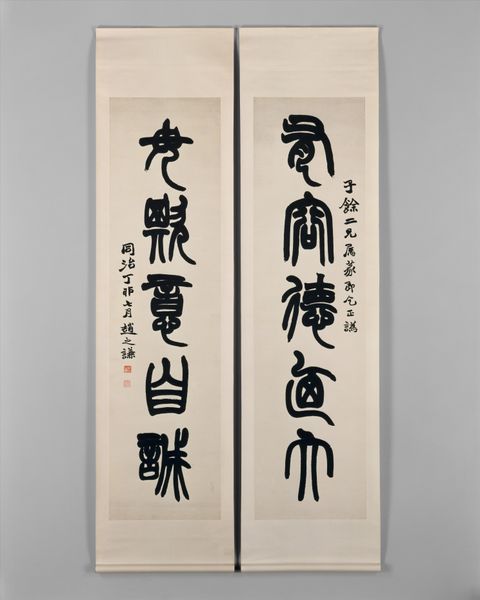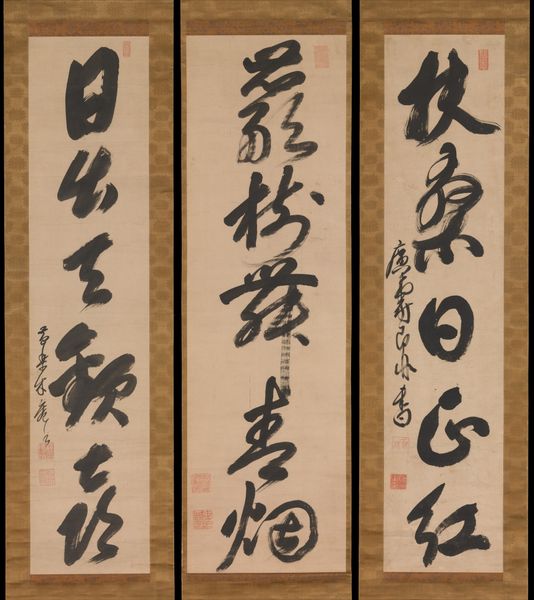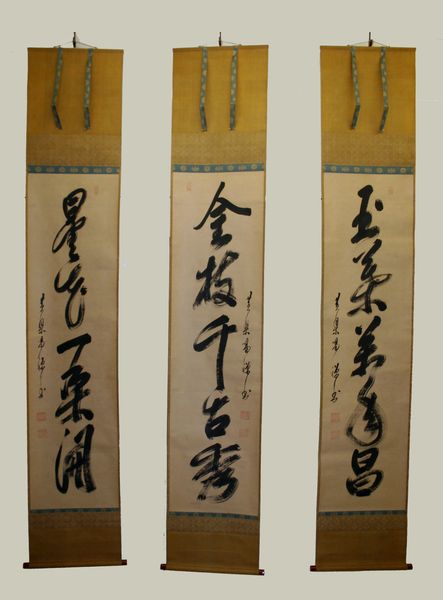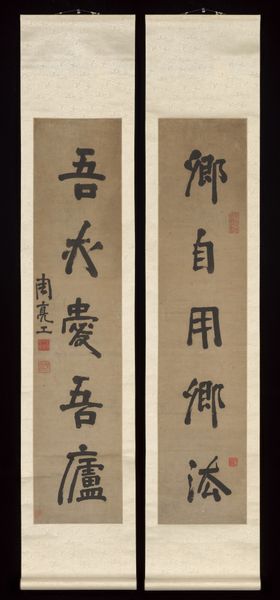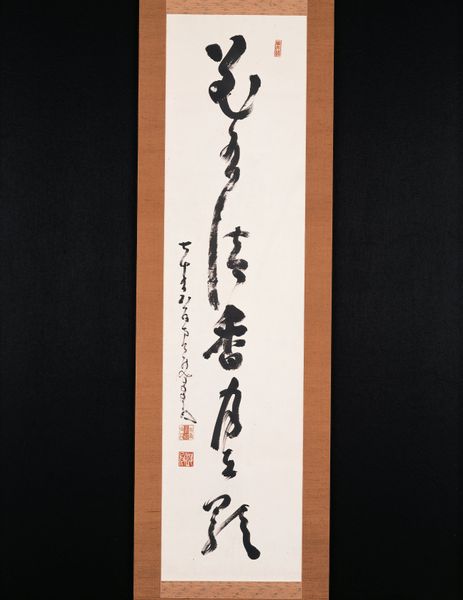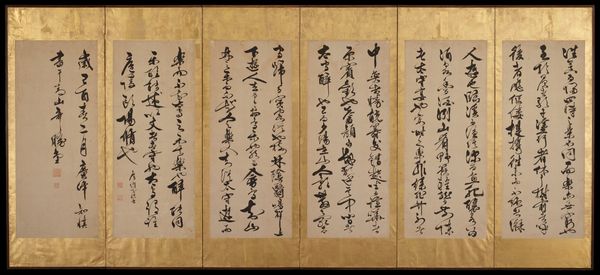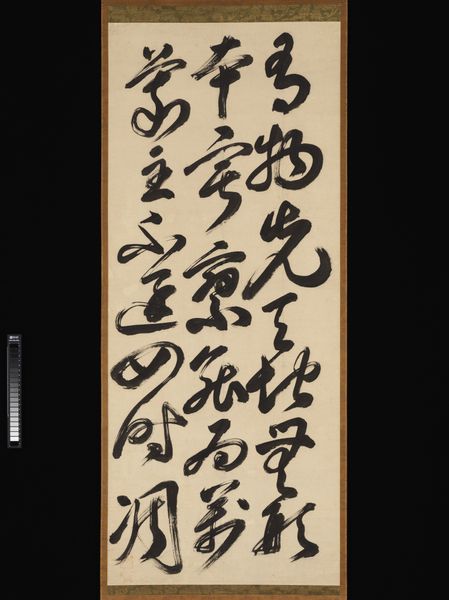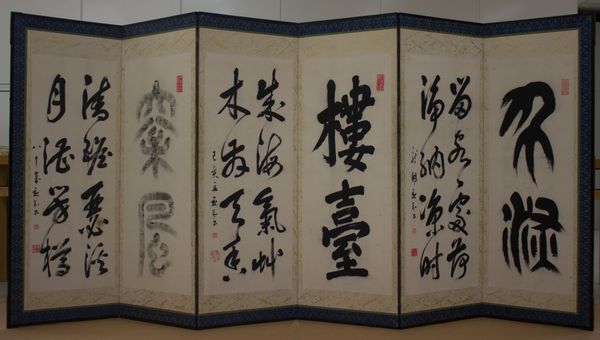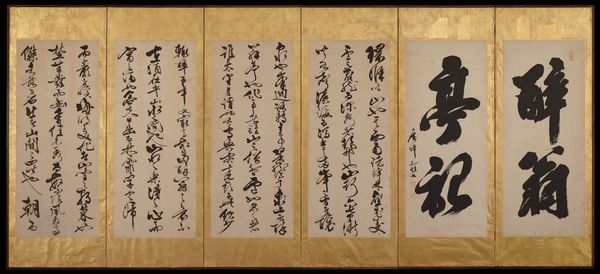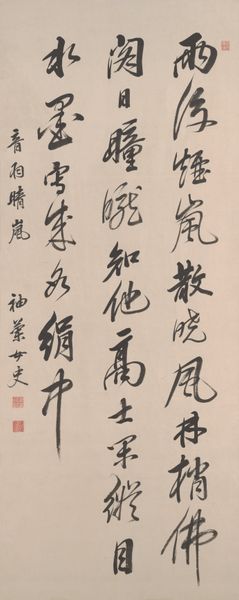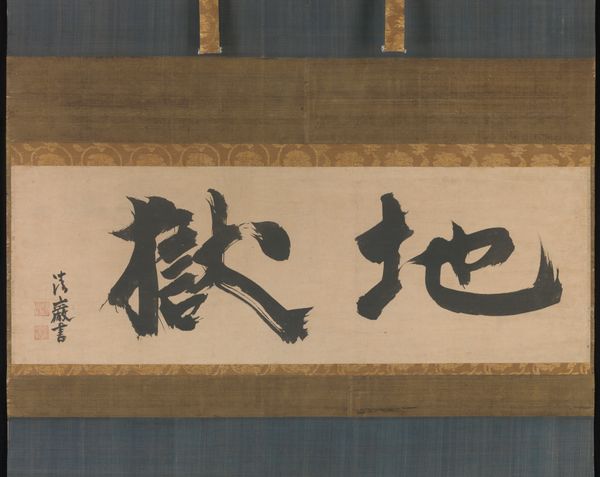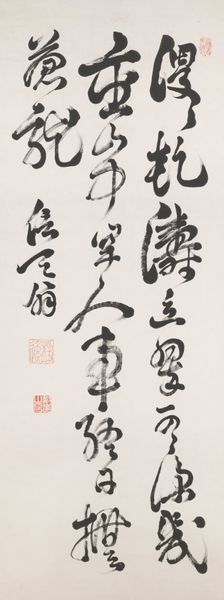
Dimensions: height 194 cm, width 48 cm, height 136.5 cm, width 31.9 cm
Copyright: Rijks Museum: Open Domain
Editor: Today we're looking at Yamaoka Tesshū's "Zen-kalligrafie", created sometime between 1836 and 1888. The work consists of three vertical scrolls rendered in ink on paper. At first glance, the dynamic brushstrokes appear incredibly spontaneous and free, yet there’s also a strong sense of underlying discipline. What’s your take on this piece? Curator: Well, what a delicious scribble! It’s funny how calligraphy, even when you can't decipher a word, can transmit such a direct hit of... what? Feeling? Energy? Perhaps both. It's the way the ink pools and leaps, isn’t it? A record of the artist's breath, almost. Think of it, Editor, like the best kind of abstract landscape, mapped not in hills and rivers, but in thought and gesture. Each stroke, a tiny journey. Does it make you want to grab a brush yourself? Editor: Absolutely! It feels less about perfect form and more about raw expression. I notice the varying thickness of the lines, some so bold, others so delicate. Does that variance hold a particular significance? Curator: Oh, undoubtedly. Consider it a visual diary, Editor. The bold strokes might signify certainty, conviction. The thinner lines? Perhaps hesitancy, contemplation. This is Zen, after all. It's about being fully present in each moment, each brushstroke a reflection of that fleeting now. It's tempting to get hung up on perfect translations, but perhaps the real poem lives in the energy itself. Editor: That's a wonderful way to put it. I'll never look at calligraphy the same way again. It makes you want to live in the moment. Curator: Exactly! And isn’t that, at the end of the day, what great art should do? Remind us to truly be here.
Comments
No comments
Be the first to comment and join the conversation on the ultimate creative platform.
